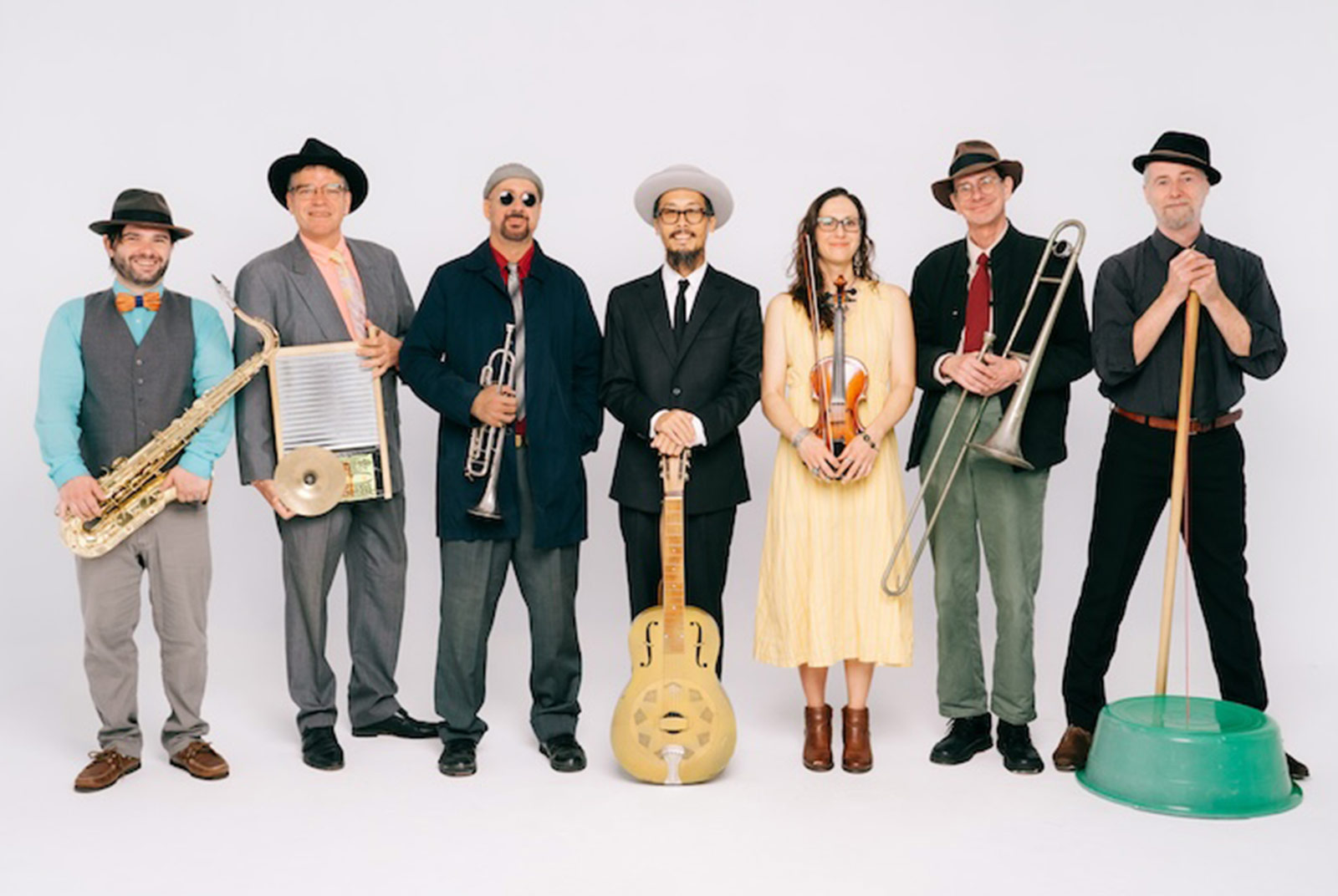A Farmer-Artist Who Returned to His Home
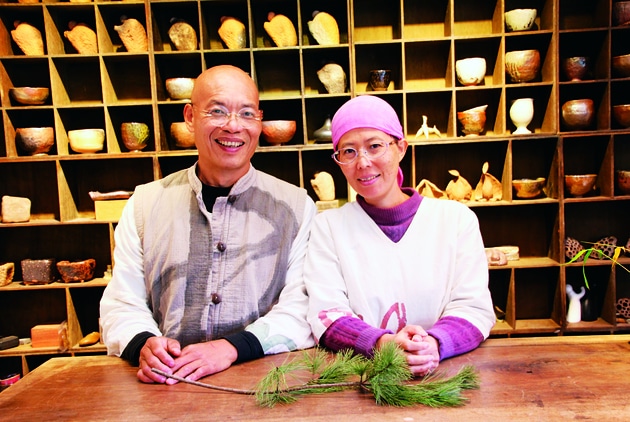
Source:Nantou County Government
"People should not only see living things as vegetables and food, they must see the entire living ecosystem." Brooding over the devastating effects of climate change and difficulties in conservation, the farmer-artist had planted many indigenous Taiwanese plants in the garden. "Get to know them and they will continue to grow for you."
Views
A Farmer-Artist Who Returned to His Home
By Ju-Yin LinSponsored Content
Go along Provincial Highway 3 in Taiwan to the border of Miaoli and Hsinchu where the roads meander amongst the verdant mountains, and find Shuiliudong Community between the lush green hills. One arrives at a traditional Hakka Sanheyuan (U-shaped residence) where above the entryway of the ancestor's hall is carved "Yingchuan Hall" and from within comes the sound of recited Buddhist mantras.
On one side, proud and powerful calligraphy strokes proclaim "Lai Tang-Ya Family Art Museum” while white porcelain butterfly hanging ornaments sway in the breeze. Within the residence, artist Lai Tang-Ya and his wife Gao Qin-Yu, wearing home-dyed clothing with calligraphy prints, are busy sweeping the fallen leaves in the courtyard.

Below the many Japanese white pine and magnolia trees, a table and chairs have been set up, surrounded by lilies waiting to blossom.
"This is the Green Pine Magnolia Seat, in front are the wild sea lilies, in the back yard are the wild mountain lilies," Lai said, as if displaying precious jewels, informing us of which flowers bloom in May, closely followed by other seasonal flowers of July. "I was born in this wilderness, and like the other children born in my hometown, we have had no opportunity since high school to come back after leaving for studies and work." The wish to return had been hidden deep in his heart for over two decades, before he was finally able to come home.
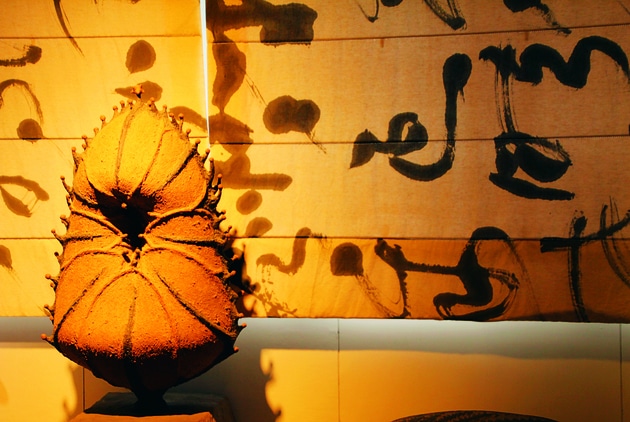
The studio was renovated from the old storage building next to the ancestral home, while the greenery outside of the large window are the vegetable beds that Lai Tang-Ya tends to. The curtains painted with calligraphy provide shade that transforms the sunlight into a soft, elegant radiance.
The studio is rich and exciting with a bar for vinegar-tasting, a large writing-desk, a carved wooden lamp stand, Tang Po's hand-dyes outfits, a tea set for treating guests, as well as a vinegar stand made from recycled steel, and the artworks that Lai created for the "Ceramic Craze", "Seed", and "Pupa" series. This is the couple's work studio that serves also as an artwork exhibition room and a classroom for receiving guests and holding classes.
Gao Qin-Yu, who prefers to be called "Tang Po," recalled the long process of their journey home, she said: "The move took more than two years before we finally came back for good and settled down properly." During the days where life was an endless hustle bustle between Sanxia and Toufen, where they had to go to markets, finish with the moving, deal with farm work, and create artworks, Lai Tang-Ya's health took a toll and he suffered a brain hemorrhage.
"I still have so many unfinished tasks, life can't end now," says Lai, who follows Buddhist doctrines, when lightly recounting his illness and recovery.
Little Praying Samanera that Embody Life Revelations
"The creation of the Little Praying Samanera series sort of embodies the third phase of changes in my mindset," Lai said. In each of the creative stages, there is meaning and life revelation behind it. The original "prototype" of the statue of the Samanera bowing down to pray was born nearly ten years ago in Baiji Mountain of Sanxia. Lai, who had just started learning about Buddhism, attempted to use the mud from the reservoir for creating his works.
The piece was part of the Ceramic Pupa series from before, with which he held a solo exhibition at the Yingge Ceramics Museum in 2008. Typhoon Morakot in 2009 made him think about elevating his pain and grief to an even deeper level of reflection and blessing, so by mixing the earth and rocks from the disaster areas with the mud from the reservoir, he created the "first generation" of Little Praying Samanera.
By injecting his overflowing emotions into his works, he hoped that they would help people recover from their sorrow and grief. Lai incorporated the concepts of eco-environmental protection and created the "second generation" of the Praying statues by firing the works using an energy-saving, low-temperature method. He smoked the works with dead wood and leaves, which gave each Little Samanera statue different color variations on the surface, to symbolize the marks left behind after being refined in fire.
"After my recovery in 2017, I slowed down my tempo even more and continued with the Little Praying Samanera series." Gao Qin-Yu said that after Lai returned and settled down in his homeland, with his feet embedded in the soil of home, he began recalling the ups and downs he experienced in his life. Each of the Samanera statues was kneaded and the textures created by hand, with his heart full of gratitude and blessings as he "gave thanks to the heavens."
"After firing, the Samanera statue is porous, which helps to retain moisture. If you place it outdoors in a ditch for a while, moss and fern will grow out naturally from the surface, followed by little snails and bugs that will make it their home, thereby slowly forming an ecosystem." Lai picked up a dripping wet statue and studied it closely, happily admiring the results from the interaction between nature and pottery. This is a work of art that is alive and has become one with the environment.
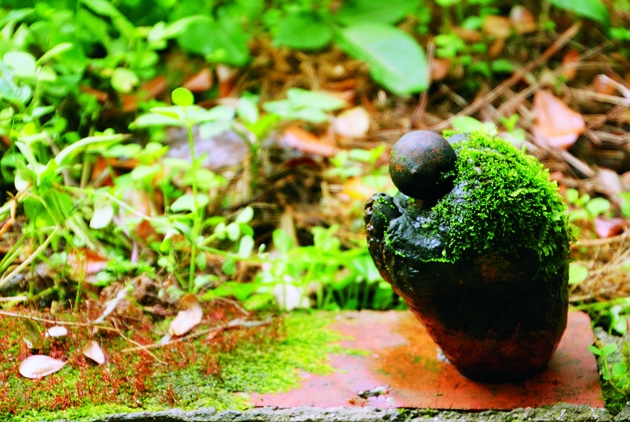
(After Lai Tang-Ya returned and settled down in his homeland, with his feet embedded in the soil of home, he began recalling the ups and downs he experienced in his life. Each of the Samanera statues was kneaded and the textures created by hand, with his heart full of gratitude and blessings as he "gave thanks to the heavens.")
Whether the "Lai Tang-Ya Family Art Museum" is at Baiji Mountain or Shuiliudong, it remains committed to being a "friendly neighbor, friendly to the environment." In order to create a diverse ecosystem and follow the cycle of nature, Lai rented a piece of land in front of his house to serve as a separation belt that protects the various plants and organisms they have painstakingly cultivated.
"People should not only see living things as vegetables and food, they must see the entire living ecosystem." Lai, brooding over the devastating effects of climate change and difficulties in conservation, had planted many indigenous Taiwanese plants in the garden. "Get to know them and they will continue to grow for you." Plants such as arrowroot, golden spider lily, and ailanthus-like prickly ash were deliberately planted, while the pond full of lotuses offer graceful blossoms in summer and lotus seeds in autumn. (Read: Traditional Agricultural Knowledge of Taiwan Indigenous People)
Flowers blossom, wilt, and bear fruit; everywhere one can experience the synchronized breathing of the artist together with Mother Nature.
Symbiosis of the Farmer-Artist and Nature
The vinegar urns of Tang Po were the advance troops that were first sent back home. When they started trading at the "248 Farmers’ Market", the jars of vinegar were transferred back home for brewing. "Here we are far away from the noise and hustle bustle of cities; the air is clean and warm, suitable for the growth of our vinegar babies. The fermentation process is even better than when we were in Sanxia."
With the mindset and approach of true scientists, Gao Qin-Yu utilized her expertise in microbial genetic engineering on the brewing of vinegar. Each bottle of vinegar undergoes a "secondary fermentation" for one year during which stage one is "alcoholization", where the fruit and yeast is mixed together for fermentation, a process that takes around three months to half a year, and stage two is "acetation", where acetic bacteria is mixed in and left to stand for half a year or longer.

 (From their younger days of complete immersion in the creative process and burnout to the current phase of being content with a leisurely lifestyle and doing what they really want while striving for perfection, here at "Lai Tang-Ya Family Art Museum", one can sense the harmony between art and nature and the artists' love for and anxiety and concern over the land while they slowly decipher their own philosophy of life.)
(From their younger days of complete immersion in the creative process and burnout to the current phase of being content with a leisurely lifestyle and doing what they really want while striving for perfection, here at "Lai Tang-Ya Family Art Museum", one can sense the harmony between art and nature and the artists' love for and anxiety and concern over the land while they slowly decipher their own philosophy of life.)
"At first, our vinegar was just something a wife makes for her husband, but by word of mouth and after setting up a stall at the market, our reputation spread." We use our own homegrown mandarin oranges, Japanese white pine, olives, and noni fruit, or toxin-free fruits purchased from small farmers who practice natural, environmentally-friendly agriculture. Each type of vinegar is labeled with its source of origin.

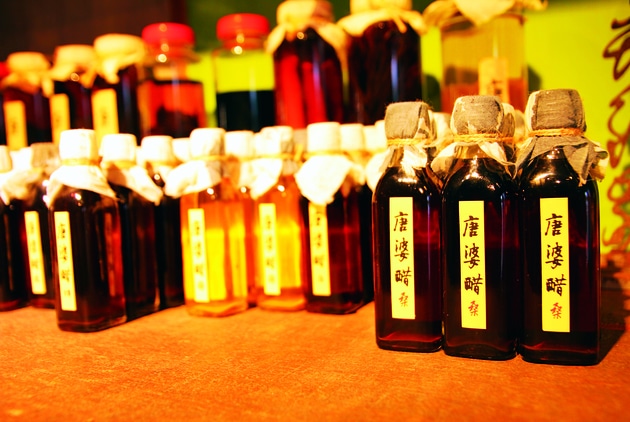
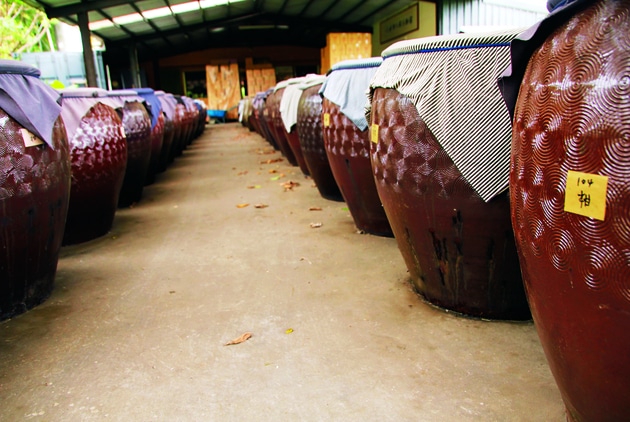
"It's my job to prune the mandarin orange trees. At first I didn't know how to do the pruning and would cut out artistic designs, but then the branches started growing all over the place," Lai recalled the early days when they began with farming and the funny mistakes they made. "Now I understand the principles behind the formation of the shoots so I can prune accordingly and still allow the trees to retain artistic shapes. I regard them as an integral part of my portfolio!"
Easy-going but determined, he insisted on managing the orchard his father had left him in person without using herbicides, pesticides, or insecticides. Swallowtail butterfly larvae, mature longhorn beetles, and Chinese windmill butterfly eggs can be found on the fruit trees; while he patrols the orchard, he also inspects the habitat. "This is a third stage larva, it will turn into a pupa once it gets a little bit bigger; this is a first stage larva, it looks like bird poop..."
Full of knowledge on butterflies, the artist is also an ecologist as the herbage surrounding the orchard has attracted butterflies to make it their home. Different plants attract different butterflies, evoking the elegant passage in the collection of verse and prose, Dream Shadows: “cultivating flowers can invite butterflies, layering rocks can invite clouds, planting pines can invite the wind, and storing water can invite aquatic plants."
Under the Japanese white pine trees are two kilns, which were the last members to come back home. All along the way, Lai Tang-Ya has insisted on creating works that are richly imbued with his personal ideals, because he believes that "the purpose in life is not to find ways to satisfy more needs, but to strive to maintain inner peace."
From their younger days of complete immersion in the creative process and burnout to the current phase of being content with a leisurely lifestyle and doing what they really want while striving for perfection, here at "Lai Tang-Ya Family Art Museum", one can sense the harmony between art and nature and the artists' love for and anxiety and concern over the land while they slowly decipher their own philosophy of life. Just like a pupa waiting to turn into a butterfly, their strength is innate, powerful, and profound.
Lai Tang-Ya Family Art Museum │ Tang Po Food Store
No. 37-1, Liudong, Neighborhood 3, Liudong Vil., Toufen City, Miaoli County
037-603551 (Reservation required, 20 visitors per group maximum)
Additional Reading
♦ Taiwanese Chocolate Seduces the World
♦ The Hakka Cultural Renaissance Memories─Tea, Camphor Laurel, and Sugar Cane
♦ Fruit Tourism is Taiwan’s Ripe New Trend!






